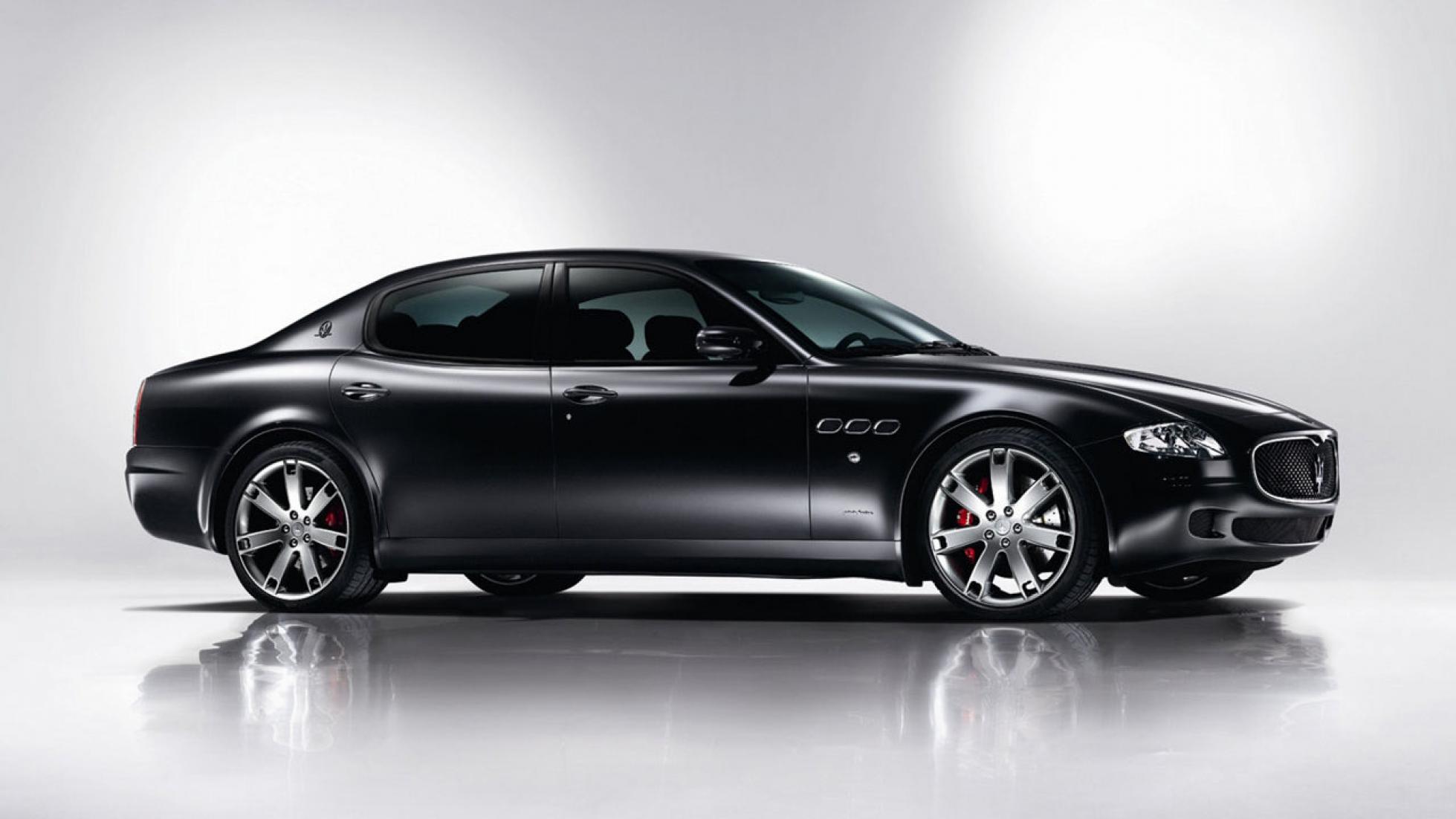Top Gear’s Top 9: the best Italian car names

Quattroporte
Translation: four door
Maserati didn’t exactly vacillate over what to christen its multi-aperture sedan when it first built one way back in 1963.
“It’s got four doors, unlike our other cars, so how about… uh… that?” seems to have been the extent of the badging meeting. And it’s so elegantly simple, Maserati has recycled it for every generation of its biggest, baddest four-door yet.
Special mention here should also go to the Audi Quattro. The all-wheel drive rally icon is literally the ‘Audi Four’. But “fire up the Four” doesn’t really have that same ring to it.
Competizione
Translation: competition
If you tell someone you drive a BMW M3 Competition, there’s a very real chance they might ask you where you won it. ‘Competition’ is not, in English, a particularly evocative word.
But, when articulated in Italian – swelling from a measly four syllables to a lyrical six – comp-e-tiz-i-on-e becomes a gloriously exotic mouthful.
And it tends to be worn by some rather interesting cars too, from the flawed but gorgeous Alfa Romeo 8C to the new hardcore Ferrari 812 and, erm, the Abarth 595 Competizione.
Testarossa
Translation: red head
Yep, it’s the ginger Ferrari. The equivalent of McLaren calling its next supercar the CarrotTop.
Except, the Testarossa’s name doesn’t really owe anything to playground jibes about hair colour after all. It’s simply a literal nod to the rosso-painted four-valve cylinder heads of its 180-degree V12 engine, which delivered 385bhp.
Just think, if BMW or Audi had bought Ferrari, this icon might’ve been called the Rot-Kopf.
Superleggera
Translation: superlight
Caterham once called a hardcore version of its Seven the Superlight. Straightforward car, straightforward name. But if you’re building stuff that’s a bit more, well, posh, you need to reach for the Italian dictionary.
Lamborghini titled its stripped-out hardcore Gallardo the ‘Superleggera’, and Aston Martin revived the moniker for its latest part-carbon DBS V12 – paying homage to the knee-tremblingly pretty DB4 Superleggera from 1961.
Pista
Translation: track
Picture the scene. It’s 4.55pm on a sunny Friday afternoon in a sweltering office in Maranello. Ferrari is all set to launch its lighter, faster, nastier version of the 488 GTB, but there’s a problem.
Someone’s just pointed out the car it replaces was called ‘Speciale’. And that’s quite a tricky title to top. “Molto Speciale?” “Extra Speciale?” The suggestions become increasingly desperate.
Then, someone grabs a handful of pistachio nuts from the nibbles bowl, looks out of the window onto the Fiorano test circuit and has an idea. “It’s for the track, guys – why don’t we just call it the ‘488 Track’?”
Fortunately this conversation occurred in Italian, and lo, the 488 Pista was born.
Scuderia
Translation: stable
In fact, uncompromising mid-engined Ferraris have quite the history of improbable names.
The F430’s mad alter-ego bore the name ‘Scuderia’ as a tribute to stables of Italian racehorses. And given Ferrari’s not exactly subtle association with prancing nags, it went down a lot better than if Bentley called its next limited-edition Continental ‘the Horsebox’.
Squadra Corse
Translation: racing team
“Hello, we’re the Lamborghini Racing Team”. Yep. That does the job, we know who you are and what you’re here for. All good.
But now try that in Italian.
“Buongiorno. Noi siamo il Lamborghini Squadra Corse.”
Just better, isn’t it? You still have all the information, but now it sounds like you’re a crime-fighting vigilante crew. Squad goals.
Disco Volante
Translation: flying saucer
Alfa Romeo’s experimental racing cars of 1952 and 1953 were, believe it or not, styled by science, not a pursuit of beauty.
As understandings of aerodynamics appreciated after the Second World War, Milanese coachbuilder Carrozzeria Touring set about wind-tunnel testing streamlined bodies for Alfa’s 1900 C52, making them slippery in a straight line but also less susceptible to a dangerous crosswind.
To do this, Touring rounded off the car’s fuselage and tucked the bodywork in around the arches. In this configuration, it was theorised the 227bhp engine would be able to push the car to an impressive 241 kilometres per hour.
Officially, the cars were known as the 1900 C52, but once someone spotted the resemblance to those alleged UFOs that’d been spotted by baffled US Air Force pilots over New Mexico, it became the flying saucer, a.k.a. the Disco Volante.
Countach
Translation: OMFG holy sh*t
In case you’ve never heard the tale, then no, all Lamborghinis are not in fact named after angry cows that died excruciating deaths for the sake of a barbaric medieval bloodsport.
Back in the early 1970s, Marcello Gandini was sketching the outrageous wedge-shaped lines that would become one of Lamborghini’s all-time greats. When presented with the design, one of his draughtsmen – who hailed from the Piedmont region of north-west Italy – exclaimed “contacc”, which was basically a gasp of ‘bloody hell, that’s naughty’ in his local Piedmontese dialect.
Gandini liked the sound of it, and asked late, great Lambo test driver Bob Wallace what he reckoned. The slang name got the thumbs up as the car’s official title, and it’s now in the lexicon of every petrolhead on the planet.

